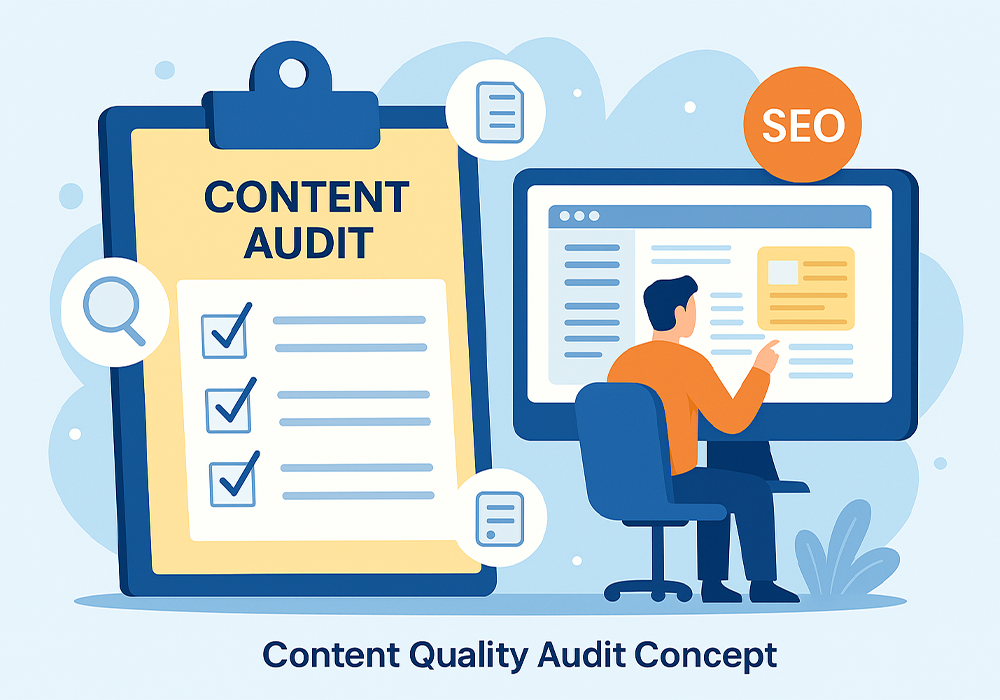Strategies for Recovering from Google’s March 2025 Core Update

Google’s March 2025 Core Update has sent waves across the digital marketing world, with many websites experiencing significant shifts in search rankings. If your website has been impacted, it’s important to understand that core updates are not penalties but broad changes aimed at improving the relevance and quality of search results. The good news? Recovery is possible — but it requires a strategic, data-driven approach.
At Adam Innovations, we help businesses stay resilient through algorithm shifts. In this article, we’ll share the most effective strategies for recovering from the March 2025 Core Update and getting your website back on track.
1. Analyze the Impact Area
Start by identifying which areas of your website were affected. Use tools like:
- Google Search Console: Check for significant drops in impressions and clicks by page, query, or country.
- Google Analytics: Look for traffic dips on specific landing pages or content categories.
- Semrush / Ahrefs: Monitor keyword rankings and visibility scores.
Compare pre- and post-update data to pinpoint what changed. Knowing whether your blog posts, product pages, or home page took a hit will help focus your recovery efforts.
2. Re-evaluate Content Quality

Google’s March 2025 update has strengthened its focus on E-E-A-T (Experience, Expertise, Authoritativeness, Trustworthiness). Ask yourself:
- Does your content provide real value?
- Is it created by subject matter experts?
- Are you providing unique insights and not just rephrased material?
Conduct a content audit:
- Remove outdated or irrelevant articles.
- Update existing content with fresh data, stats, and expert opinions.
- Enhance articles with helpful visuals, videos, or downloadable resources.
Quality trumps quantity. Focus on delivering in-depth, user-centric content that answers real search intent.
3. Improve Author Credibility and Transparency
Author reputation now matters more than ever. Every blog or article should have a clear author bio detailing the person’s expertise. Consider:
- Linking to author’s LinkedIn profiles or other professional credentials.
- Adding a page for each contributor outlining their background.
Also, enhance site trust signals:
- Display contact information prominently.
- Include privacy policies, terms, and disclaimers.
- Add reviews, testimonials, or trust badges if applicable.
4. Strengthen Topical Authority
Google rewards websites that are authoritative within a specific niche. Build a content ecosystem around core topics. For example, if you’re a digital marketing agency, you should have:
- Clusters of blogs on SEO, PPC, content marketing, etc.
- Internal linking between related articles to guide users and bots.
This strategy helps search engines understand your depth of knowledge and ranks you higher for related queries.
5. Ensure Content Is Always Fresh
Google continues to reward websites that keep their content up to date. If you haven’t touched certain pages in a while, now is the time to review them.
- Refresh old articles with the latest stats, research, and developments.
- Update product/service pages to reflect current offerings.
- Add new internal links to recently published content.
Also, regularly publishing new content signals to Google that your site is active and relevant. Consider maintaining a monthly blog calendar to stay consistent.
6. Make Your Content Relatable and Human-Centric
With this update, Google seems to favor content that resonates with readers on a human level. Avoid overly robotic or keyword-stuffed writing. Instead:
- Use a conversational tone where appropriate.
- Share personal experiences or real-life examples.
- Address the reader directly with “you” and “we.”
The goal is to build trust and connection, not just rank. Readers should feel like they’re talking to a real expert — not a faceless company.
7. Enhance User Experience (UX)
Core updates consider overall user satisfaction. Assess:
- Page speed – Use Google PageSpeed Insights to improve loading time.
- Mobile-friendliness – Ensure your site looks great and functions well on all devices.
- Navigation – Simplify menus and reduce clutter to help users find information quickly.
Also, lower your bounce rates by making content engaging with CTAs, videos, and interactive elements.
8. Acquire High-Quality Backlinks
Backlinks from reputable sources remain a key ranking factor. Post-update, Google is placing more emphasis on natural, editorial backlinks. Ways to build these include:
- Guest posting on high-authority websites.
- Publishing original research or data.
- Engaging in relevant forums like Spiceworks, Quora, or Reddit with expert answers and linking back when appropriate.
Avoid spammy links or PBNs, which may now be more harshly penalized post-update.
9. Stay Informed and Be Patient
Recovery doesn’t happen overnight. Monitor performance weekly and continue making improvements. Subscribe to SEO news outlets like Search Engine Journal or Google’s official Search Central Blog for updates.
Google often rolls out multiple adjustments after core updates — staying agile and informed can help you recover faster.
Final Thoughts
Recovering from the Google March 2025 Core Update is all about aligning with Google’s long-term vision — delivering trustworthy, user-focused content through a fast, well-organized, and authoritative website.
At Adam Innovations, we specialize in helping businesses recover and thrive post-update. Whether it’s a full SEO audit or strategic content planning, our team is ready to guide you toward sustainable search growth.